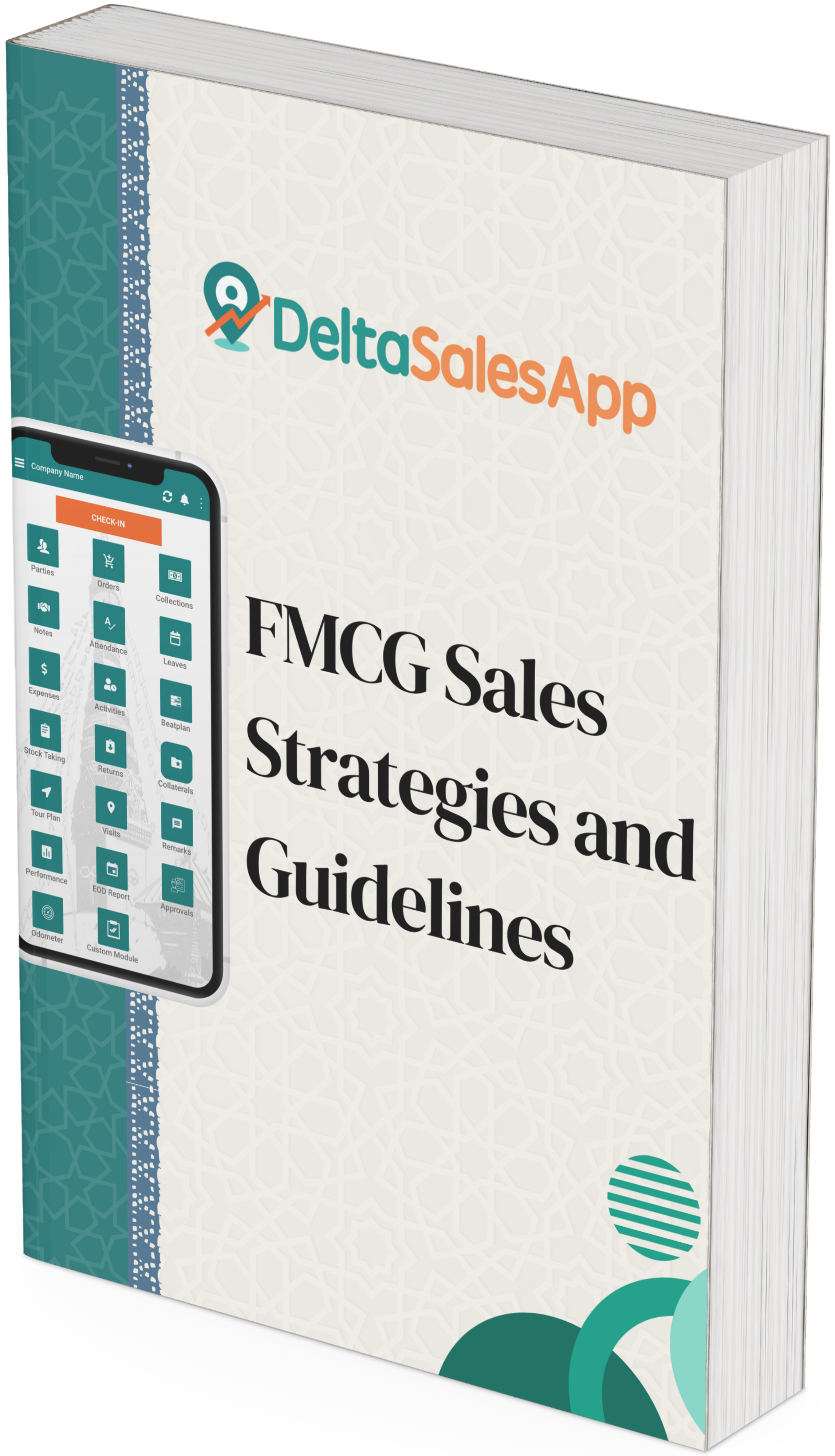Sales Distribution Strategies: How to Choose the Right Approach for Your Business?
_1737375072.png)
In today’s fast-paced market, having a solid sales distribution strategy is crucial for any business looking to thrive. Whether you’re a startup or an established enterprise, the way you distribute your products can make or break your success. With countless options available, choosing the right approach might feel overwhelming. But don’t worry—this guide will break down everything you need to know about selecting and optimizing the best distribution channels for your business needs. Let’s dive into the world of distribution strategies and explore how they can elevate your sales game!
Understanding Distribution Strategies
A distribution strategy is a plan for delivering products to customers efficiently. It encompasses various methods, such as direct sales, retail partnerships, and online platforms. Different strategies cater to diverse market needs and preferences, allowing businesses to optimize their reach and enhance customer satisfaction through tailored delivery mechanisms that align with their goals.
A distribution strategy outlines how a business delivers its products or services to customers. It encompasses the choice of channels, logistics, and partners involved in reaching the target audience. A well-defined strategy ensures that products are available at the right place and time, meeting customer expectations while maximizing efficiency and profitability for the business.
Overview of different types of distribution strategies
Distribution strategies come in various forms, each tailored to specific business needs. Direct distribution involves selling straight to consumers, while indirect uses intermediaries like wholesalers or retailers. Exclusive distribution limits outlets for premium products, whereas intensive seeks maximum market exposure. Selecting the right approach can significantly influence sales and customer reach.
Factors to Consider in Distribution Strategy Planning
When planning your distribution strategy, consider the type of product and its target audience. Analyze warehouse capabilities and transportation logistics to ensure efficiency. It's crucial to align chosen distribution channels with your overall business objectives, ensuring they support growth while meeting customer expectations effectively throughout the supply chain.
Product type and customer base considerations
When developing a sales distribution strategy, consider the nature of your product and its target customers. High-end electronics may require specialized retailers, while everyday goods can thrive in grocery stores. Understanding customer preferences and buying behaviors will guide you in selecting appropriate channels that resonate with your audience and drive sales effectively.
Warehouse and transportation logistics
Efficient warehouse and transportation logistics are crucial for a successful sales distribution strategy. A well-organized warehouse can streamline inventory management, reduce costs, and enhance order fulfillment. Properly coordinating transportation ensures timely deliveries to customers, minimizing delays. Investing in technology can optimize both areas, resulting in improved overall performance and customer satisfaction.
Aligning distribution channels with business needs
Aligning distribution channels with your business needs is crucial for success. Assess your target market, product characteristics, and customer preferences. Choose channels that not only reach your audience effectively but also complement your brand's values. Flexibility and responsiveness to changing demands ensure that your distribution strategy evolves alongside your business goals.
Building Successful Distribution Channels
Building successful distribution channels starts with a clear plan. Identify your target market and select appropriate channels. Establish partnerships that align with your brand values and goals. Train your team to ensure consistency in messaging and operations. Regularly analyze performance metrics to adapt strategies, ensuring you meet customer needs efficiently and effectively.
Steps for building and implementing distribution channels
Building effective distribution channels involves several key steps. Start by identifying your target market and understanding their preferences. Next, research potential partners that align with your goals. Develop clear agreements outlining roles and responsibilities, then implement training programs to ensure consistency. Monitor performance regularly to make necessary adjustments for optimal efficiency.
Choosing the right distribution channels for your business
Selecting the right distribution channels is crucial for reaching your target audience efficiently. Consider factors like customer demographics, geographic location, and purchasing habits. Analyze the cost-effectiveness of each channel while ensuring it aligns with your brand image. Testing multiple channels can reveal which ones resonate best with your consumers, driving sales effectively.
Adapting channels to B2C and B2B markets
Adapting your distribution channels for B2C and B2B markets requires understanding their unique needs. B2C often demands speed and convenience, while B2B focuses on relationships and reliability. Tailor your approach by incorporating digital platforms for consumers and dedicated sales teams for businesses to ensure you meet the distinct expectations of each market segment.
Providing training and standardizing product information
Training your team on product details ensures consistency and confidence in sales efforts. Standardizing product information across all channels helps eliminate confusion and miscommunication. This clarity fosters trust with customers, leading to better engagement. Regular updates and training sessions keep everyone informed about changes, enhancing overall effectiveness in the distribution strategy.
Types and Roles in Product Distribution
Understanding product distribution channels is key for any business. Each channel, whether wholesale or retail, serves a unique purpose. Distributors and partners play crucial roles in reaching customers effectively. By recognizing their functions, businesses can streamline operations and enhance customer satisfaction. Identifying the right mix of channels makes all the difference in success.
Understanding product distribution channels
Product distribution channels are the pathways through which goods travel from producers to consumers. They include various intermediaries, such as wholesalers, retailers, and agents. Understanding these channels is crucial for businesses to effectively reach their target markets and optimize sales strategies tailored to specific customer needs and preferences.
Exploring different types of distribution (wholesale, retail, franchisor, distributor)
Distribution can take various forms. Wholesale distributors buy in bulk and sell to retailers, while retail channels focus on direct consumer sales. Franchisors grant rights to use their brand, expanding reach through franchisees. Distributors play a crucial role by connecting manufacturers with buyers, streamlining logistics and enhancing market penetration for diverse products.
Success factors while working with distributors and partners
Establishing clear communication is crucial when collaborating with distributors and partners. Set mutual goals to ensure alignment. Provide comprehensive training to empower them with product knowledge. Building strong relationships fosters trust, enhancing performance. Regularly evaluate their effectiveness, offering feedback for improvement while acknowledging successes along the way strengthens collaboration and drives sales growth.
Strategies and Approaches
Various distribution strategies can enhance your market reach. Consider direct sales, channel partnerships, or online platforms. Each approach has its benefits, depending on your target audience and product type. Regularly review and adapt your strategy to stay relevant in a rapidly changing marketplace, ensuring you continuously meet customer demands effectively.
Overview of various distribution strategies in practice
Various distribution strategies can significantly impact business success. Direct sales, e-commerce platforms, and third-party distributors each offer unique advantages. Companies may choose intensive distribution for widespread reach or selective distribution to target specific markets. Hybrid approaches combine these methods to maximize efficiency and align with customer preferences, ensuring products are available where consumers want them.
Defining and revisiting a distribution strategy
A sales distribution strategy should be clearly defined but flexible. Regularly revisit your approach to ensure it aligns with market changes and customer needs. Analyze performance metrics, gather feedback, and adjust tactics as necessary. This proactive stance keeps your business competitive and responsive in a dynamic marketplace where consumer preferences can shift rapidly.
Adapting to disruptions in the distribution landscape
The distribution landscape is constantly evolving. Factors like technology advances, global events, and consumer preferences can disrupt established channels. Businesses must stay agile, reassess their strategies frequently, and embrace new technologies to adapt swiftly. This flexibility ensures they meet customer needs while maintaining efficiency in an unpredictable environment.
Optimizing Distribution Channels
Choosing the right distribution channels is crucial for maximizing efficiency. Evaluate factors like target audience and product type. Aim for seamless integration among channels, ensuring they align with your business goals. Embrace technology to streamline processes and enhance customer experience in today’s digital landscape, making sure every channel adds value to your operations.
Key considerations when choosing distribution channels
Choosing the right distribution channels involves understanding your target market and product type. Consider factors like customer preferences, geographical reach, and cost efficiency. Evaluate how each channel aligns with your overall business strategy. Assess the potential for scalability as your business grows or shifts in response to market trends.
Making distribution channels work effectively
Effective distribution channels rely on clear communication and strong relationships. Regularly assess performance metrics to identify bottlenecks or inefficiencies. Encourage collaboration among partners to share insights and strategies. Streamline processes through technology, ensuring that inventory management and order fulfillment are synchronized for optimal flow from supplier to consumer. Adaptability is key in maintaining effectiveness.
Utilizing distribution channels in the digital age
In today's digital landscape, leveraging online distribution channels is essential. E-commerce platforms, social media, and mobile apps allow businesses to reach wider audiences efficiently. Integrating these channels enhances customer engagement and provides valuable data insights. Adapting to digital trends ensures your sales distribution strategy remains relevant and competitive in a rapidly evolving market.
Case Studies and Examples
Microsoft's distribution strategy relies on a mix of direct sales and partnerships, enhancing reach. Oracle focuses on specialized resellers for tailored solutions. Starbucks uses company-operated stores alongside licensed locations to maintain brand consistency while expanding rapidly. These examples illustrate how diverse approaches can drive success in different markets through effective sales distribution strategies.
Learning from successful distribution strategies of companies like Microsoft, Oracle, and Starbucks
Microsoft leverages a hybrid distribution model, combining direct sales and partners to reach diverse markets. Oracle focuses on strategic alliances with resellers for deep market penetration. Starbucks utilizes a well-defined retail strategy, creating immersive experiences in-store while also expanding through online platforms. Each approach highlights the importance of adaptability in distribution strategies.
Conclusion and Additional Resources
Choosing the right sales distribution strategy is crucial for your business's growth and customer satisfaction. Explore various resources, including industry reports and expert guides, to deepen your understanding. Stay informed about trends and best practices to refine your approach continuously, ensuring you remain competitive in an ever-evolving market landscape.
Recap of the importance of choosing the right distribution approach
Choosing the right distribution approach is crucial for businesses aiming to maximize efficiency and reach. An effective strategy not only enhances customer satisfaction but also boosts sales performance. By aligning your distribution channels with your business goals, you can create a seamless experience that fosters loyalty and drives long-term growth in competitive markets.
Further resources for mastering distribution strategy
Mastering your sales distribution strategy can significantly impact your business success. To deepen your understanding, consider exploring resources such as industry reports, webinars, and online courses focused on distribution channels. Engaging with professional networks or forums can also provide valuable insights from peers and experts in the field. Books by leaders in logistics and supply chain management will enrich your knowledge further. Continuous learning will keep you ahead of new trends and strategies that shape the market today.








